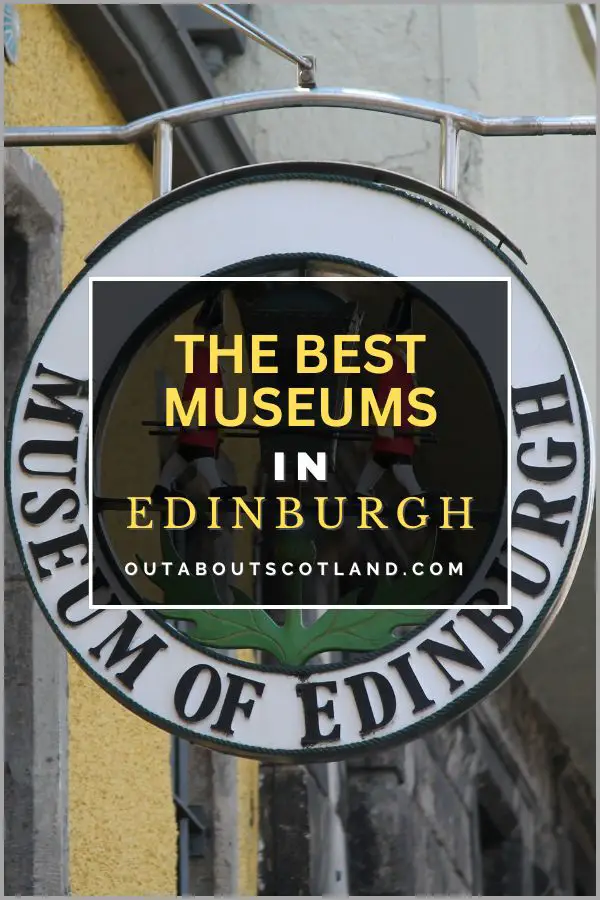Scotland’s capital, Edinburgh, has long been a favourite destination for travellers from all over the world thanks to its remarkable landmarks that cover every corner of the city, from the Pentlands Hills in the south to the Firth of Forth in the north.
A landmark is defined as an object or feature that’s easily recognisable and serves as a point of reference, whether they’re natural formations like hills or rivers or man-made structures like monuments or buildings. Some of the city’s most iconic landmarks include Edinburgh Castle, perched high above the city on an extinct volcanic rock, and the Palace of Holyroodhouse, a magnificent royal residence situated at the far end of the world-famous Royal Mile.
In this article, we’ll delve deeper into the best must-see landmarks in Edinburgh to explore both the hidden gems and celebrated icons that make the city such a treasure trove of history and culture.
Edinburgh Castle

| Address: | The Esplanade, Edinburgh, EH1 2NG |
| Opening Hours: | 1 April to 30 September: 9.30 am to 6 pm (last entry 5 pm) 1 October to 31 March: 9.30 am to 5 pm (last entry 4 pm) |
| Admission Price: | Adult (16-64yrs): £21.00 Concession (65yrs+ and unemployed): £17.00 Child (5-15yrs): £12.50 Family (1 adult, 2 children): £41.50 Family (2 adults, 2 children): £60.50 Family (2 adults, 3 children): £72.00 |
| Parking: | No on-site car park. Paid car parks across Edinburgh. |
| Contact: | +44 (0)131 225 9846 |
| Facilities: | Cafes, gift shops, toilets, disabled access, audio guides, guided tours |
| BUY TICKETS | Click here to purchase |
Out About Scotland guide: Edinburgh Castle
Edinburgh Castle is one of, if not the, most famous landmarks in Edinburgh, overlooking Princes Street from its perch at the very top of Castle Rock, which lies at the western end of the Royal Mile. This impressive fortress has origins dating back to the 12th century, and during its long life, it has served as a royal residence, a military garrison, and even a prison, making it a gold mine of fascinating stories.
A visit to Edinburgh Castle is a wonderful journey through time as tourists can explore a huge number of attractions from the dazzling Honours of Scotland (the nation’s crown jewels) to the ancient Stone of Destiny (used in royal coronations).
Visitors can also marvel at St. Margaret’s Chapel, the oldest surviving building in the city, and witness the firing of the One O’Clock Gun, a tradition that has taken place every day since 1861. In addition, visitors can see the Regimental and National War Museums before filling up in the onsite cafe and restaurant at this attraction, which is far and away Scotland’s busiest, drawing an incredible 2 million tourists each year.
Protect Your Family From Scotland's Biting Midges
- Powerful, reliable protection for up to 8 hours
- Water- and sweat resistant
- Repels midges, mosquitoes, horse flies, sand flies, fleas and ticks
- Safe for use on adults, children over 30 months and pregnant women
- Non-sticky, moisturising with a pleasant fragrance
- Packaging may vary
Palace of Holyroodhouse
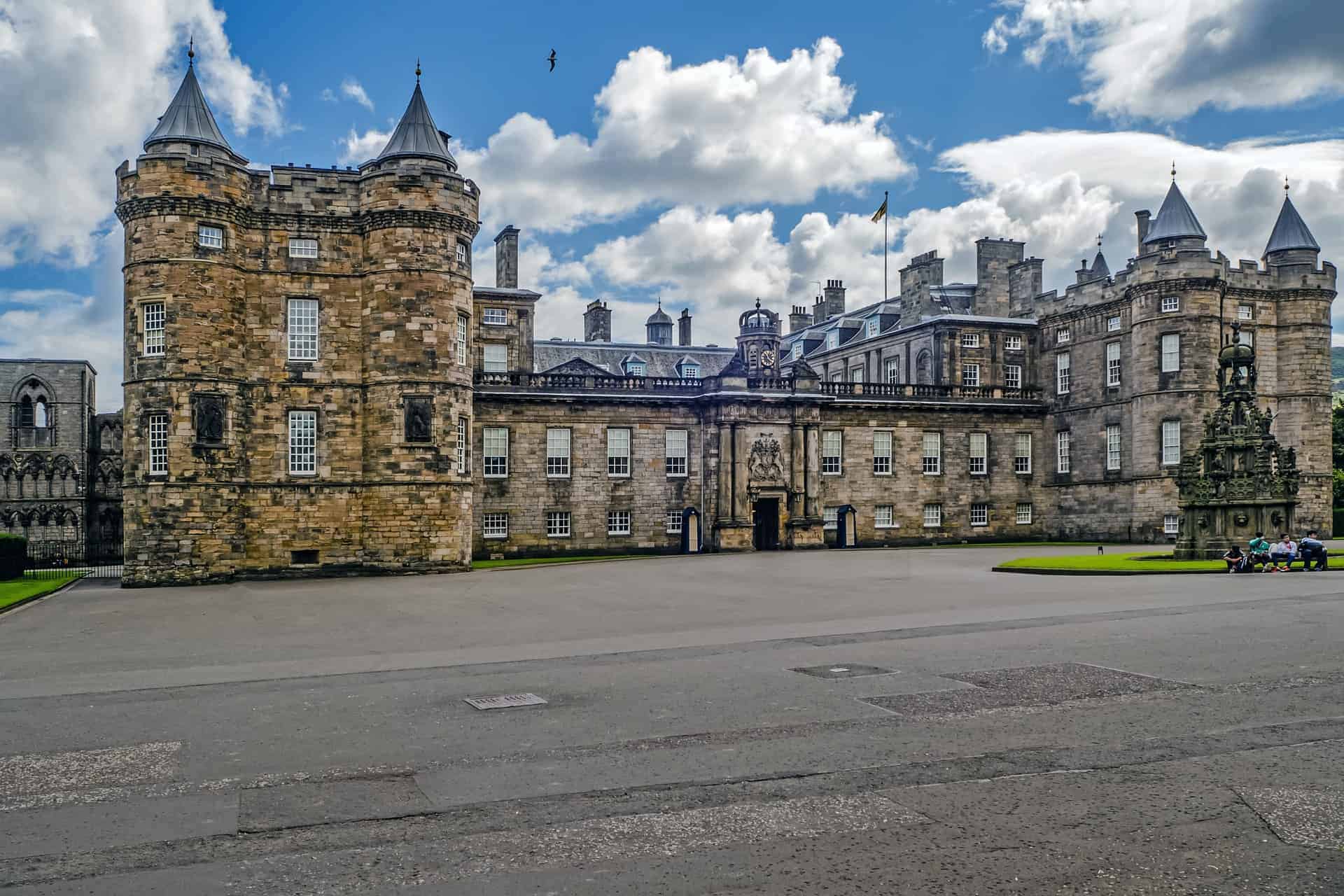
| Address: | Canongate, Edinburgh, EH8 8DX |
| Opening Hours: | 1 November - 31 March: 09:30 to 15:15 1 April - 31 October: 09:30 to 16:30 |
| Admission Price: | Adult: £18.50 Young Adult: (18-24) £12 Child: £10.50 |
| Parking: | Paid car park on Queens Drive |
| Contact: | 0303 123 7306 |
| Facilities: | Gift shop, cafe, toilets, guided tours, disabled access |
| Photos: | YouTube Video |
| BUY TICKETS | Click here to purchase |
Out About Scotland guide: Holyrood Palace
The Palace of Holyroodhouse, nestled at the foot of the Royal Mile, is a majestic building that has served as the official residence of the British monarch in Scotland since the 16th century. Rich in history, the palace has witnessed the lives of many notable figures, including James IV, James V, and Mary Queen of Scots, who lived in the royal apartments from 1561 to 1567.
Members of the royal family still frequent the palace today for official events and ceremonies, but it is also one of the most popular tourist attractions in the city.
Two of the most interesting features to keep an eye open for are the stunning formal gardens which cover more than ten acres, and the palace’s ruined Holyrood Abbey which is adjacent to the main building.
There are many more sights to see during a self-guided tour so for the best experience it’s advisable to make use of the audio guide which is included in the ticket price and explains points of interest as you walk around.
Scottish Parliament Building

| Address: | The Scottish Parliament Edinburgh EH99 1SP |
| Opening Hours: | Monday and Friday and public holidays (including Spring bank holiday) –10am to 5pm (last entry 4.30pm). Tuesday, Wednesday and Thursday – 9am to 6.30pm (last entry 6pm). Closed on weekends. |
| Admission Price: | Free |
| Parking: | None on-site. Parking is available in Edinburgh. |
| Contact: | 0131 348 5000 info@parliament.scot |
| Facilities: | Shop, exhibition, cafe, creche, guided tours. |
Out About Scotland guide: Scottish Parliament Building
The Scottish Parliament Building in Edinburgh is a testament to the country’s political history and its modern position as an engineering powerhouse. Located at the foot of the iconic Royal Mile, across the road from Holyrood Palace, this unique structure was designed by Spanish architect Enric Miralles and was officially opened in October 2004.
The building’s distinctive appearance, with its curved shapes and creative use of materials, seamlessly blends in with the historic Royal Mile, which runs along its northern side, and the beautiful Holyrood Park, which lies 1,000 feet to the south.
One of the most interesting features of the building is its use of ‘Think Pods’, contemplative spaces built into the walls where MPs can gather their thoughts. The debating chamber, with its semi-circular design, is another notable space as not only does it span more than 30 metres but it does so without using any supporting columns.
Visitors can witness the workings of the Scottish Parliament firsthand inublic galleries, and on non-sitting days, free guided tours are available thatprovide insights into the building’s design, history, and day-to-day operations.
Book Tours in Scotland
Dynamic Earth
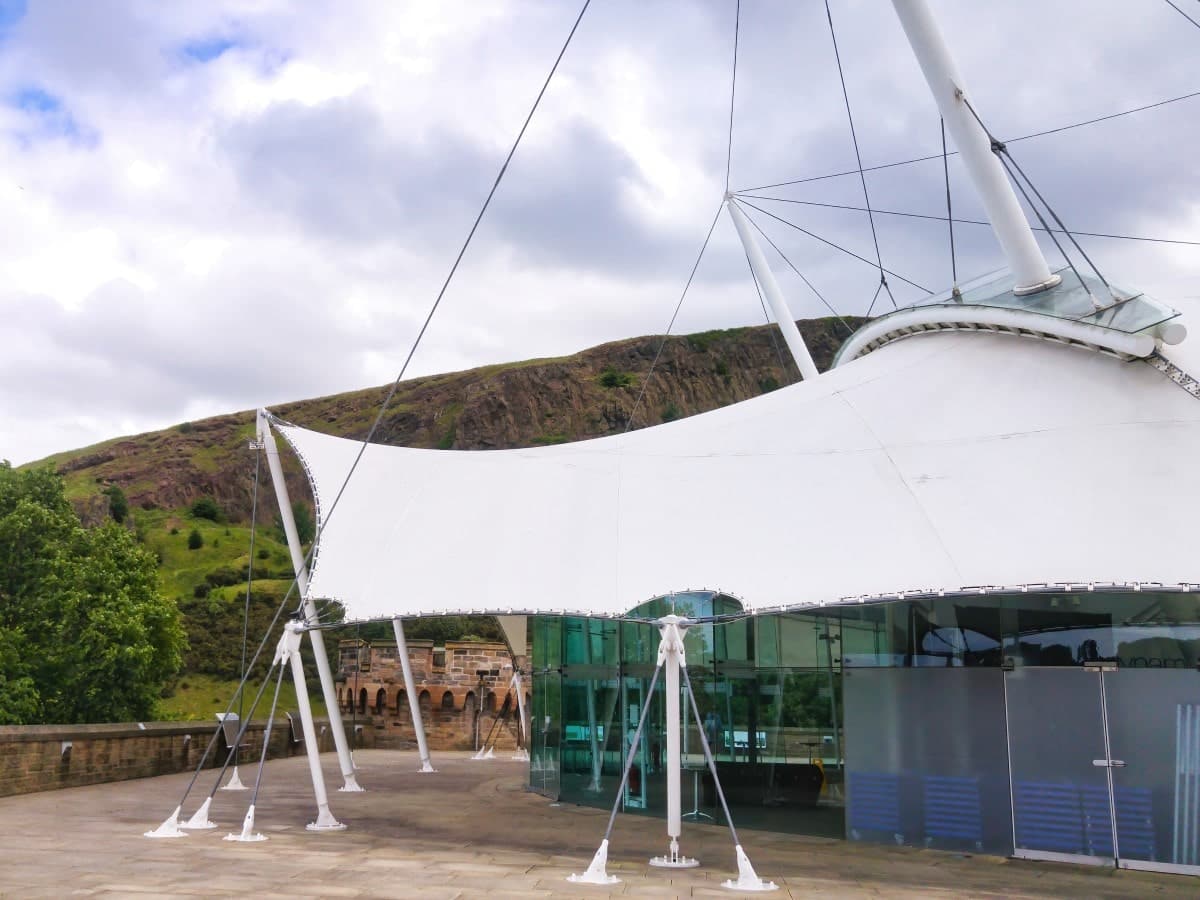
Dynamic Earth is a captivating interactive tourist attraction that takes visitors on a fascinating journey through the history of Planet Earth. Nestled at the foot of Holyrood Park, this £34 million state-of-the-art facility first opened its doors in 1999, wowing visitors with its design, which consists of a fabric membrane stretched over a skeleton of steel supports.
This tent-like structure represents our ever-changing planet, a theme that continues inside where visitors can explore a range of immersive exhibits and galleries from the depths of the Earth’s oceans to the far reaches of outer space.
Among its most interesting features are a 360-degree planetarium where visitors can watch immersive films centred around the natural world, and the Discover the Deep gallery that transports guests to the sea floor and Scotland’s cold water reefs.
While visiting Dynamic Earth, children are welcome to participate in workshops and learn from expert staff about the planet’s geology and environment, while all family members can enjoy the interactive exhibits as well as the onsite cafe, which has panoramic views of Holyrood Park.
Holyrood Park
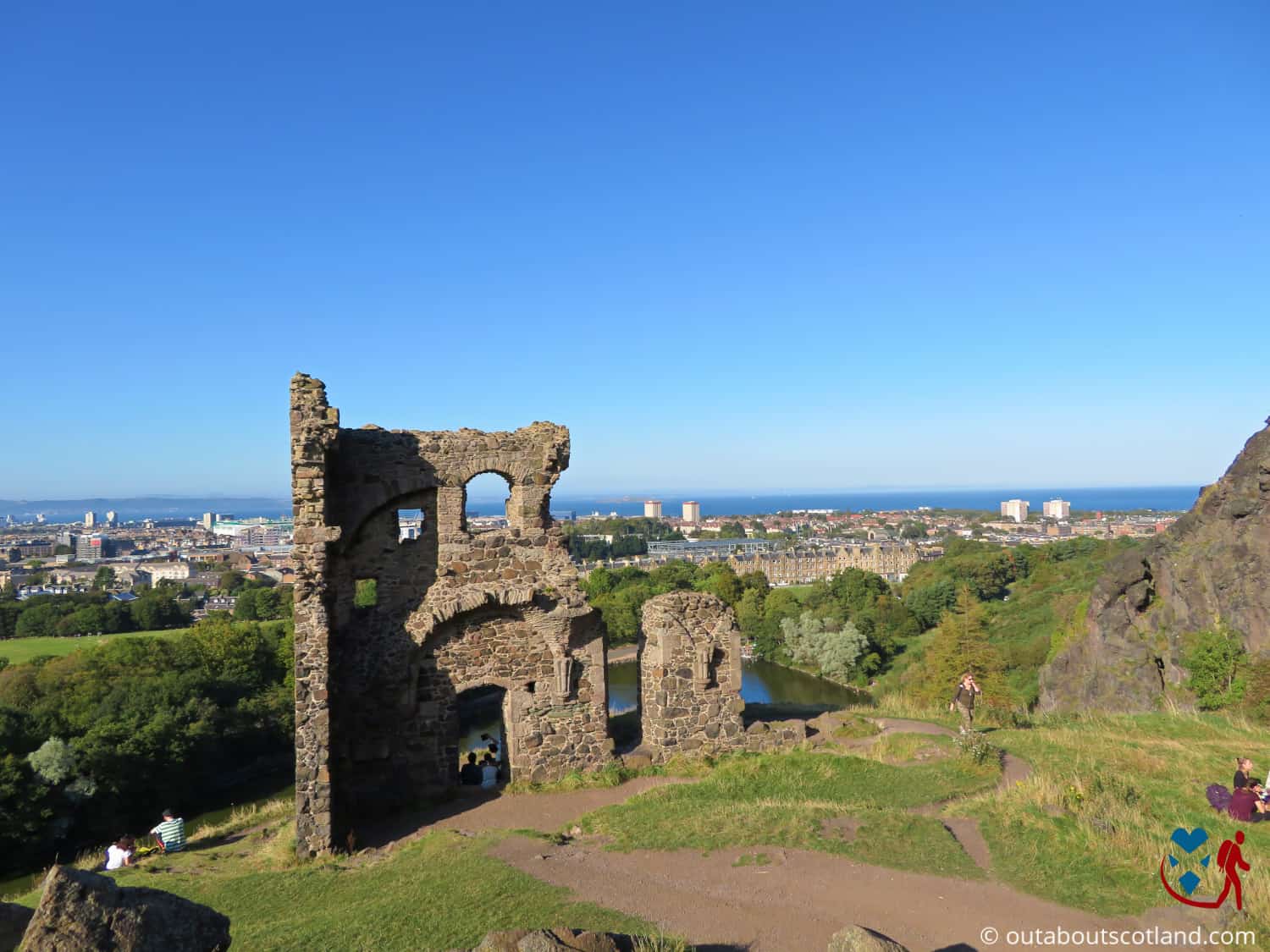
| Address: | Queen's Drive, Edinburgh, EH8 8HG |
| Opening Hours: | Holyrood Park is accessible on foot 24/7, 365 days a year. The park is closed to cars at the weekend. |
| Admission Price: | There is no fee to visit Holyrood Park. |
| Parking: | Parking is available at Broad Pavement, St Margaret's Loch, and Duddingston Loch car parks. Broad Pavement parking is paid (approx £1 per hour) except for Historic Environment Scotland members. The other car parks are free. |
| Contact: | NA |
| Facilities: | There are no facilities within Holyrood Park. There are a multitude of visitor facilities available on the Royal Mile including shops and restaurants. Toilets are available at the Holyrood Park education centre (1 Queen's Drive, Edinburgh, EH8 8HG). |
| Photos: | Virtual Tour YouTube Video |
Out About Scotland guide: Holyrood Park
Holyrood Park is easily one of the most beautiful landmarks in Edinburgh, boasting a diverse landscape that ranges from lochs to grassy plains, windswept crags, and mountainous peaks. Spanning more than 650 acres, the park was once a royal hunting ground, but it’s now the city’s most-used public space, offering locals and tourists alike a tranquil retreat from the noise of the city.
One of the park’s most iconic features is Arthur’s Seat, an ancient volcanic plug that offers stunning panoramic views of Edinburgh from its summit. The climb to the top is a popular activity among visitors who are rewarded with a breathtaking vista of the city’s skyline, but tourists should be aware that it’s a very busy location in the height of summer.
Another prominent feature is the Salisbury Crags, a series of 46-metre cliffs on the west side of the park which can be viewed from the Radical Road. The ‘road’ is actually a rough track that was built in 1820 to provide jobs for unemployed weavers, but it’s now sadly closed due to frequent rockfalls from the cliffs that tower above it.
Also within the park are the ruins of St. Anthony’s Chapel, a ruined mediaevall building that’s one of the oldest structures in the city, and Duddingston Loch, which is located in the middle of the park and can be easily accessed via the Queens Drive road.
Protect Your Family From Scotland's Biting Midges
- Powerful, reliable protection for up to 8 hours
- Water- and sweat resistant
- Repels midges, mosquitoes, horse flies, sand flies, fleas and ticks
- Safe for use on adults, children over 30 months and pregnant women
- Non-sticky, moisturising with a pleasant fragrance
- Packaging may vary
St. Giles Cathedral
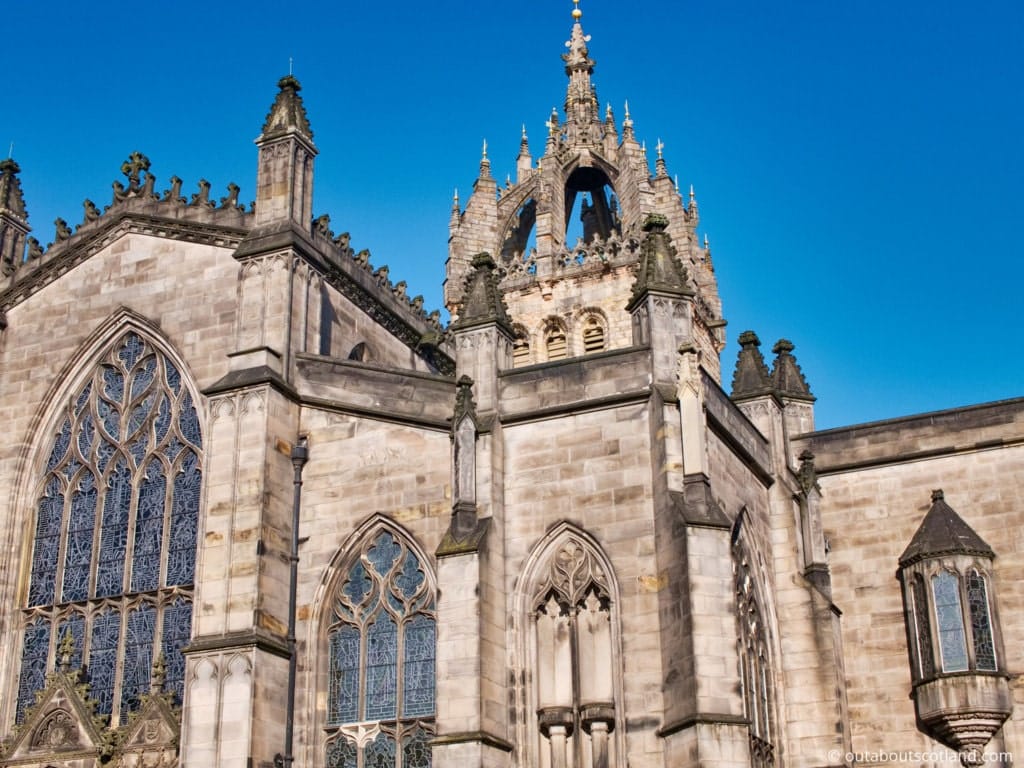
| Address: | High Street, Edinburgh, EH1 1RE |
| Opening Hours: | Monday – Friday 10:00am – 6:00pm Saturday 9:00am- 5:00pm Sunday 1:00pm-5.00pm |
| Admission Price: | Free |
| Parking: | None |
| Contact: | 0131 226 0677 |
| Facilities: | Shop, guided tours, audio tour |
| Photos: | Virtual Tour YouTube Video |
Out About Scotland guide: St. Giles Cathedral
St. Giles Cathedral, also known as the ‘High Kirk’, dominates the heart of the city in the middle of the Royal Mile. Though the building we see today dates from the 14th century, it has foundations that stretch back 200 years earlier to the time of King David I.
The cathedral features an iconic crown steeple which is one of the most notable landmarks on the city’s skyline and it also houses the beautiful Thistle Chapel which is associated with Scotland’s highest chivalric order – the Order of the Thistle.
Visitors to St. Giles Cathedral can marvel at the exquisite stained glass windows that adorn the nave as well as the stunning royal blue vaulted ceiling that was added after an extensive renovation in the 1830s.
The cathedral boasts a fascinating array of memorials and monuments including the statue of Protestant Reformer John Knox who is associated with another famous attraction on the Royal Mile – John Knox House – which is situated 1,000 feet to the east.
During a visit to St. Giles Cathedral, it’s possible to join guided tours to hear stories about the cathedral’s history, or you can simply walk around it at your leisure. There’s no entry fee, but donations are welcome.
Camera Obscura & World of Illusions
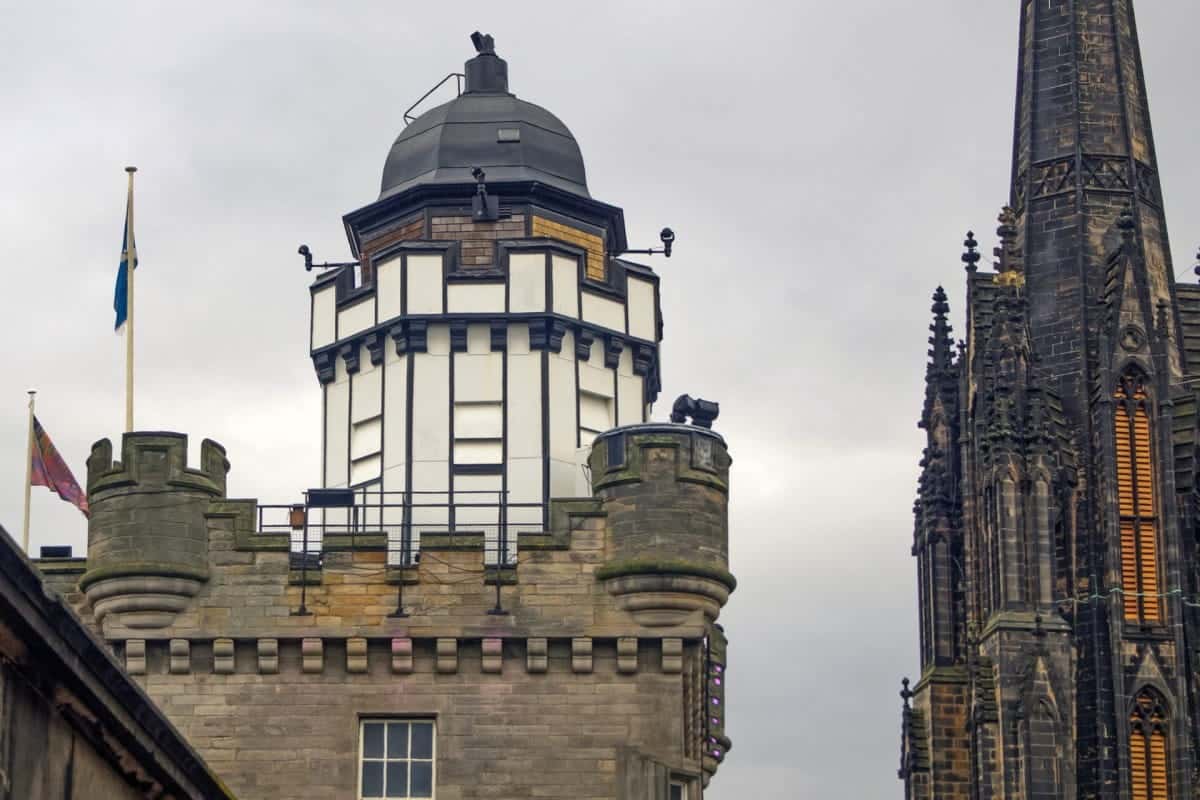
| Address: | Castlehill, Royal Mile, Edinburgh, EH1 2ND |
| Opening Hours: | Mon to Thur - 9.00am – 8.00pm Fri & Sun - 9.00am – 9.00pm Sat - 9.00am – 10.00pm |
| Admission Price: | Adult - £18.95 Student (with ID) - £16.95 Senior (65+) - £16.95 Child (5–15 years) - £14.95 Under 5s - Free |
| Parking: | None |
| Contact: | 0131 226 3709 |
| Facilities: | Gift shop, toilets, baby changing facilities, hearing loop |
| Photos: | Virtual Tour |
Out About Scotland guide: Camera Obscura
Camera Obscura and World of Illusions are two of the most popular attractions in Edinburgh and have fascinated visitors since their inception over 170 years ago. Housed in a six-story tower that was once the mansion house of the Laird of Cockpen, it offers a captivating blend of history, science, and entertainment that’s designed to appeal to all ages.
At the core of the attraction is the Camera Obscura – a Victorian-era optical device that projects an image of the surrounding cityscape onto a viewing table, something that was revolutionary at the time it was installed.
The World of Illusions is a later addition that’s spread across multiple floors and is a treasure trove of interactive exhibits, optical illusions, and mind-bending puzzles that will challenge and entertain visitors as they explore the wonders of light, colour, and perception.
Visitors can enjoy a bewildering mirror maze where they’ll navigate through a labyrinth of seemingly endless reflections, experience magical 3D artworks in a hologram gallery, and soak up panoramic views of Edinburgh from a rooftop terrace.
Book Tours in Scotland
Tolbooth Kirk
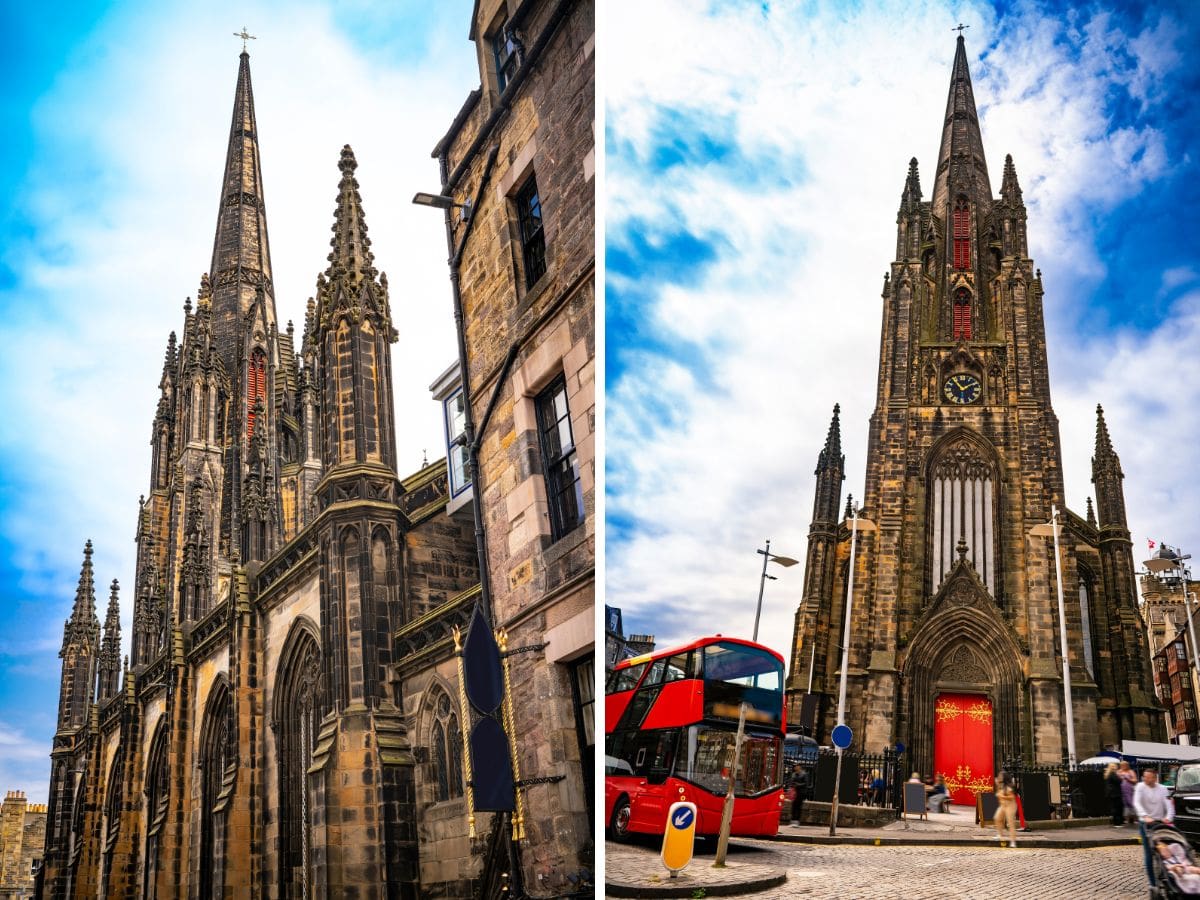
Tolbooth Kirk, previously known as St. John’s Highland Church and latterly renamed ‘The Hub’, is an architectural gem in the heart of Edinburgh at the junction of Johnston Terrace and Castlehill. Built between 1842 and 1845, this striking Gothic Revival structure was designed as the meeting place of the Church of Scotland, but even though it looks like a church, it was never actually formally consecrated as one.
Best known for its distinctive crown spire, it has become an iconic Edinburgh landmark over the years although it has now shed its religious past and is instead used for performances for the Edinburgh International Festival as well as a venue for conferences and weddings.
Much of the building is closed to the general public, but it’s still possible to walk around the ground floor to admire the Tolbooth Kirk’s lavish interior before grabbing a bite to eat in the onsite cafe, as well as enjoy performances in its three venues during the August festival.
Princes Street Gardens
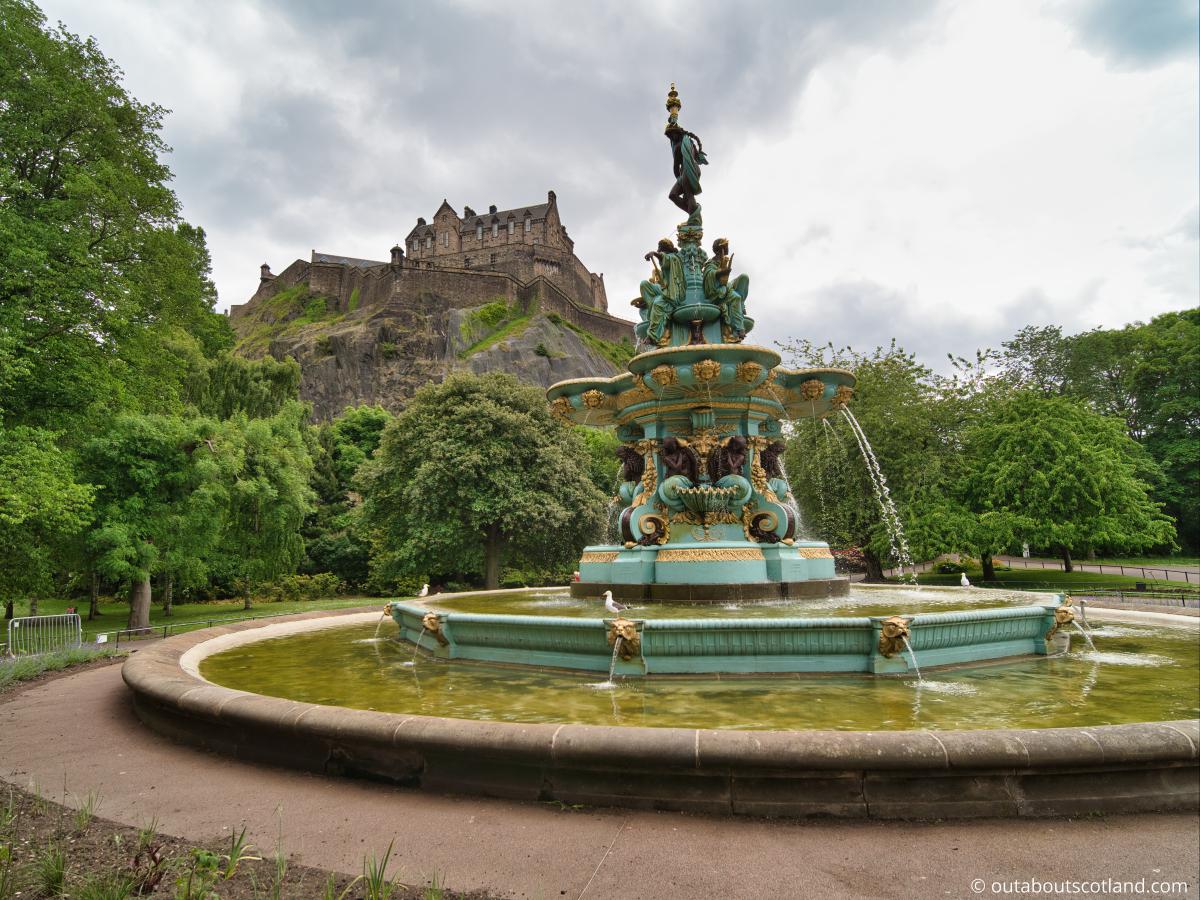
| Address: | Princes Street, Edinburgh, EH2 2HG |
| Opening Hours: | Mon to Sun - 7am - 9.35pm |
| Admission Price: | Free |
| Parking: | None |
| Contact: | 0131 529 7921 |
| Facilities: | Toilets, cafes |
| Photos: | Virtual Tour YouTube Video |
Out About Scotland guide: Princes Street Gardens
Princes Street Gardens is a picturesque public park that offers a serene escape from the hubub of nearby Princes Street. Spanning 37 acres, these gardens were originally the Nor Loch, a man-made body of water at the foot of Castle Rock that was created as part of the city’s defences in 1460. It was later drained in the 1800s and transformed into the current green space that separates Edinburgh’s Old and New Towns.
Princes Street Gardens boasts a number of interesting features including the iconic Ross Fountain, an exquisite cast-iron fountain that was gifted to the city by gunsmith Daniel Ross in 1872, and the Ross Bandstand which is still used to this day as a music venue.
The fountain has recently been restored to its original working condition, and it’s now one of the focal points of the gardens, though it’s dwarfed by the Scott Monument, a towering 200-foot Victorian Gothic tribute to the renowned Scottish author Sir Walter Scott.
Visitors to Princes Street Gardens can enjoy a leisurely stroll amid the beautifully landscaped groundsor relax on the lush lawns while taking in the views of Edinburgh Castle. For families, the gardens provide a perfect setting for a picnic, particularly in the west garden, which is home to a cafe as well as a children’s play area.
Protect Your Family From Scotland's Biting Midges
- Powerful, reliable protection for up to 8 hours
- Water- and sweat resistant
- Repels midges, mosquitoes, horse flies, sand flies, fleas and ticks
- Safe for use on adults, children over 30 months and pregnant women
- Non-sticky, moisturising with a pleasant fragrance
- Packaging may vary
Scott Monument
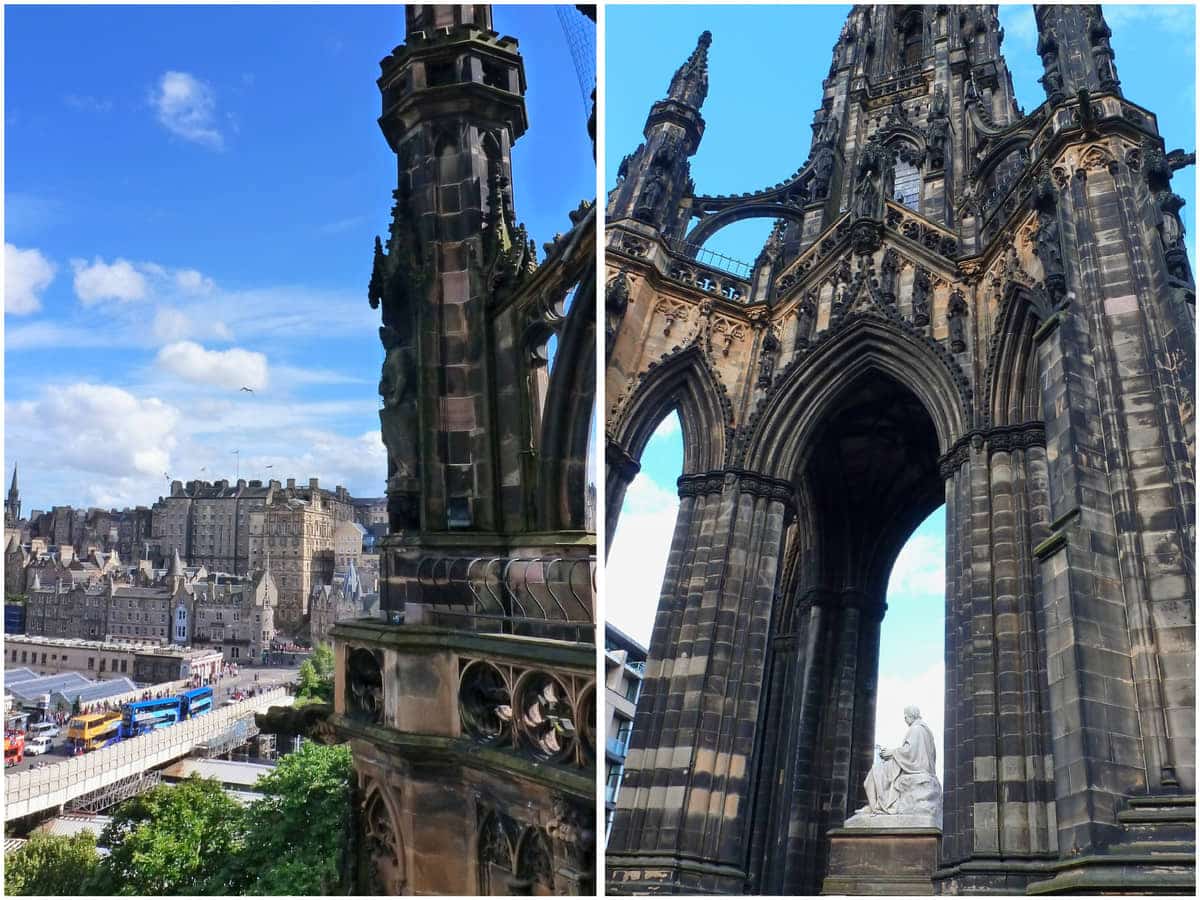
| Address: | East Princes Street Gardens, Edinburgh, EH2 2EJ |
| Opening Hours: | Open 7 days a week from 10 am to 3:30 pm |
| Admission Price: | Adults: £8 Children and Students: £6 Family pack (2 adults and 2 children or 1 adult, 3 children): £20 |
| Parking: | No on-site parking |
| Contact: | +44 (0) 131 529 4068 |
| Facilities: | None. Toilets, food and drinks available in Princes Street Gardens |
Out About Scotland guide: Scott Monument
The Scott Monument in East Princes Street Gardens is one of the city’s most iconic structures. Completed in 1844, it serves as a tribute to the great Scottish author Sir Walter Scott, and at 200 feet (61 meters) tall it’s officially the world’s largest monument to a writer.
George Meikle Kemp, who created the monument, incorporated intricate details and sculptures that highlight Scott’s life and works. Tragically, Kemp passed away before the monument’s inauguration. Among the numerous statues adorning the tower, visitors can admire a seated statue of Scott accompanied by his beloved dog Maida on the ground level, along with a further 64 figures that are visible from the ground.
Visitors to the Scott Monument can go inside the structure to climb 287 steps up a narrow spiral staircase to viewing platforms at the top, which reward with panoramic views of Edinburgh’s skyline, from Princes Street to the Pentland Hills. An on-site museum offers further insight into the life and works of Sir Walter Scott and the monument that’s dedicated to him, making it a must-visit for all tourists.
Scottish National Gallery
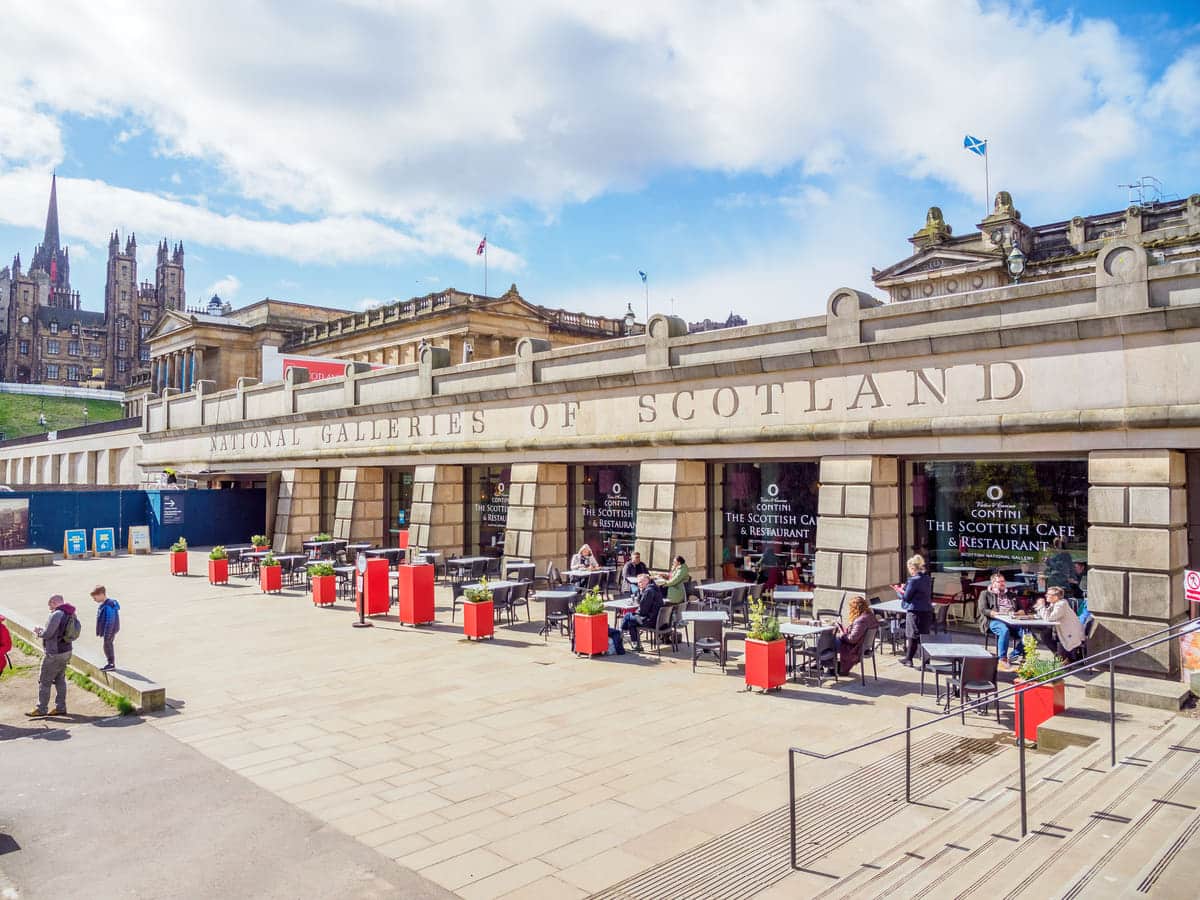
| Address: | The Mound, Edinburgh, EH2 2EL |
| Opening Hours: | Open daily, 10am-5pm |
| Admission Price: | Free |
| Parking: | None on-site. Parking is available in Edinburgh |
| Contact: | enquiries@nationalgalleries.org |
| Facilities: | Wifi, wheelchair access, wheelchairs available, lockers (£1/£2), seating throughout, bike rack, accessible toilets for gallery visitors, baby change for gallery visitors, toilets for gallery visitors. |
Out About Scotland guide: Scottish National Gallery
The Scottish National Gallery, located between the east and west sides of Princes Street Gardens, is a much-loved attraction that attracts thousands of visitors each year. This iconic institution first opened in 1859 to showcase the national collection of artworks, and it has since grown to include masterpieces from the Renaissance to the Post-Impressionist period, including works by renowned artists like Botticelli, Van Gogh, and Rembrandt.
This is one of the most recognisable landmarks in Edinburgh thanks to the gallery’s neoclassical architecture which features an intricate stone façade and grand pillars that are only equalled by the Royal Scottish Academy building next door.
Visitors to the Scottish National Gallery can explore its vast collection of paintings, sculptures, and other works of art completely free of charge, alongside temporary exhibitions that have an entrance fee.
A trip to the Scottish National Gallery isn’t complete without a stop at the terrace café to enjoy a selection of local and international dishes, or a visit to the gift shop to find unique souvenirs and art-related gifts.
Book Tours in Scotland
Calton Hill

| Address: | Calton Hill, Edinburgh, EH1 3BJ |
| Opening Hours: | 24/7 |
| Admission Price: | Free to visit Calton Hill. Nelson Monument has paid entry. |
| Parking: | No on-site car park. Paid car parks across Edinburgh. |
| Contact: | N/A |
| Facilities: | Restaurant, toilets, snack kiosk, luggage store, disabled access |
| Photos: | Virtual Tour YouTube Video |
Out About Scotland guide: Calton Hill
With an elevation of 338 feet (103 metres), Calton Hill, a UNESCO World Heritage Site, is one of the most prominent landmarks in Edinburgh. The hill is a remnant of a long-extinct volcanic plug and is located in the city centre, a short walk from Princes Street, where it offers visitors a unique blend of natural beauty and history.
Though not as integral to the city as Castle Rock, the hill still played a significant role in shaping Edinburgh into the city we know today, which is reflected by the number of monuments that have been built on it, including the National Monument of Scotland, the Nelson Monument, and the Dugald Stewart Monument.
All of these monuments were constructed in the early 19th century and showcase Edinburgh’s unsurpassed neoclassical design heritage, and they are now widely regarded as being among the top tourist sights in the city. Calton Hill also houses the City Observatory (recently renovated as an exhibition space) and The Lookout, a restaurant with stunning views from its panoramic windows.
In addition to sightseeing, the hill is a popular spot for summertime picnicking, while the annual Beltane Fire Festival celebrates the arrival of summer withth a spectacular display of fire, drums, and pageantry.
Greyfriars Kirk
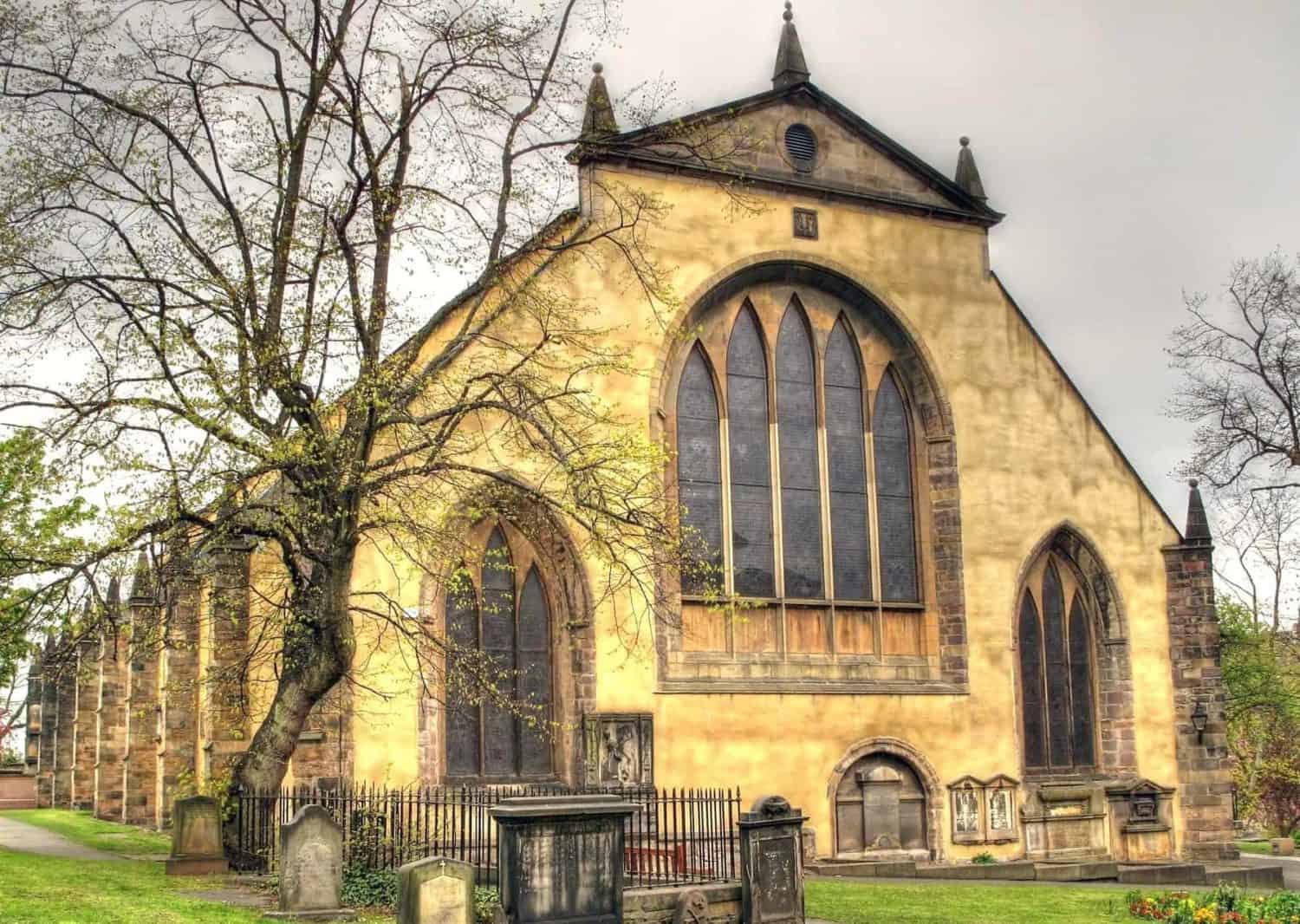
| Address: | 1 Greyfriars, Edinburgh, EH1 2QQ |
| Opening Hours: | Opening hours of the kirk vary throughout the year. Visit https://greyfriarskirk.com/ for details. The kirkyard is open 24 hours. |
| Admission Price: | Free entry |
| Parking: | No on-site parking. Paid car parking spaces in Chambers Street. |
| Contact: | 0131 2251900 contact@greyfriarskirk.com |
| Facilities: | Disabled access and toilets, shop, museum, guided tours |
| Photos: | Virtual Tour YouTube Video |
Out About Scotland guide: Greyfriars Kirk
Greyfriars Kirk is a historic church nestled within the charming confines of the Old Town, the oldest part of the city that at one time was entirely closed off by the infamous Flodden Wall. The church was founded in 1598 and is named after a group of Franciscan monks, the ‘Grey Friars’, who emigrated to Edinburgh from Holland in the 1400s.
Greyfriars Kirk is easily accessible from Princes Street by taking a walk along George IV Bridge till you reach the National Museum of Scotland where you’ll find the main entrance to the church immediately opposite.
The church’s striking exterior includes detailed stonework and stained-glass windows, all surrounded by a graveyard that’s home to the tombs and graves of many notable Scottish figures such as the 9th Earl of Argyll, the famous architect William Adam, and Sir George (Bloody) MacKenzie who local legend says has haunted the graveyard since his death in 1691.
The cemetery is also the final resting place of the loyal Skye Terrier, Greyfriars Bobby, who guarded his master’s grave for 14 years, earning him a statue in his honour on the pavement outside the church gates.
Protect Your Family From Scotland's Biting Midges
- Powerful, reliable protection for up to 8 hours
- Water- and sweat resistant
- Repels midges, mosquitoes, horse flies, sand flies, fleas and ticks
- Safe for use on adults, children over 30 months and pregnant women
- Non-sticky, moisturising with a pleasant fragrance
- Packaging may vary
Balmoral Hotel
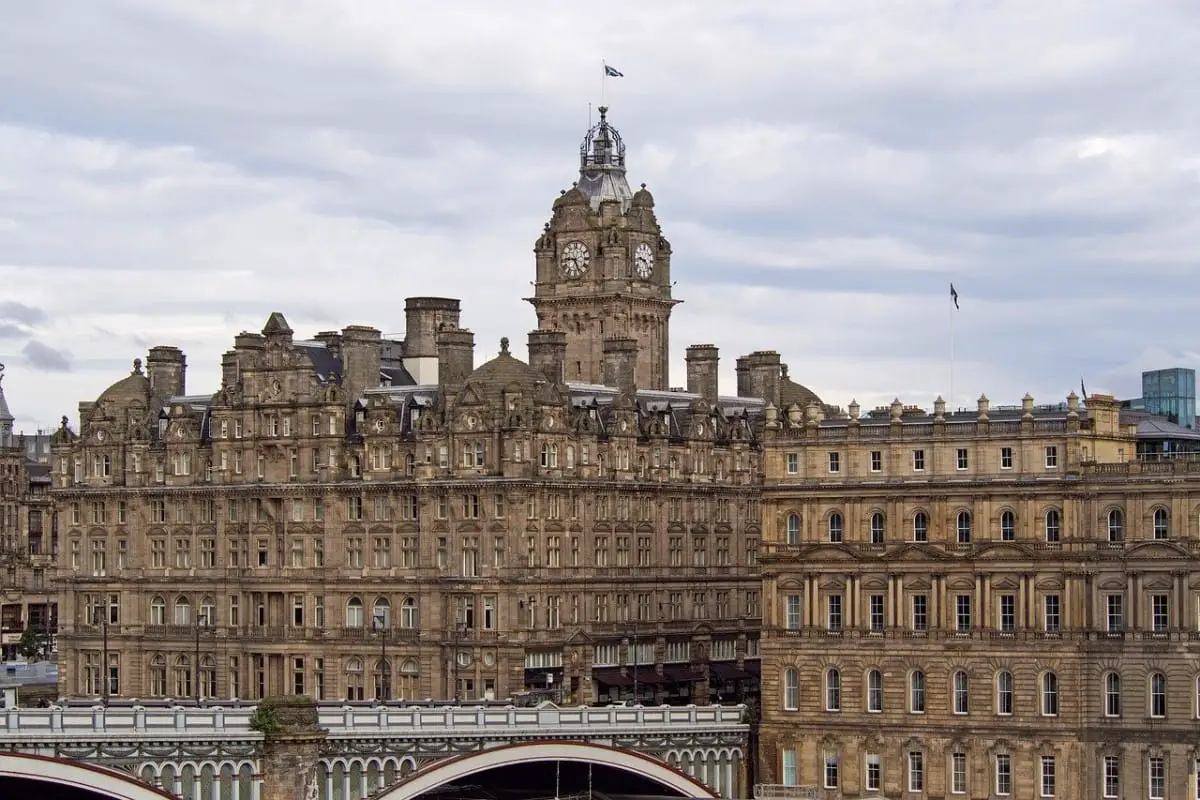
| Address: | 1 Princes Street, Edinburgh, EH2 2EQ |
| Opening Hours: | 24/7 |
| Admission Price: | Free |
| Parking: | None on site. Valet parking for guests. |
| Contact: | +44 131 556 2414 reservations.balmoral@roccofortehotels.com |
| Facilities: | Cafe, restaurant, bar, whisky room, toilets |
| Photos: | Virtual Tour |
Out About Scotland guide: Balmoral Hotel
The five-star Balmoral Hotel is situated in a prime position at the eastern end of Princes Street, between Waverley train station and North Bridge. The hotel originally opened in 1902 as the North British Hotel and was designed to accommodate railway travellers, but following a multi-million-pound revamp and a buyout by Rocco Forte in 1997, it has transitioned into one of Edinburgh’s most luxurious locations, both for dining and accommodation.
One of the hotel’s most interesting features is its clock tower which is one of the best-known sights in the city centre, partly due to its height (a remarkable 190 feet) and partly because it’s famous for being permanently set three minutes fast to ensure travellers never miss their trains.
Visitors to the Balmoral Hotel can indulge in a variety of experiences, from savouring Michelin-starred cuisine at the acclaimed Number One restaurant to unwinding at the Balmoral Spa, as well as enjoying a traditional afternoon tea in the opulent Palm Court or an expertly crafted cocktail at the chic Bar Prince.
St. Andrew’s Square

St. Andrew’s Square is a garden area between Queen Street and Princes Street in the city’s New Town. The square is surrounded by elegant Georgian architecture and serves as a focal point for tourists who use it as a marker to find their way to nearby attractions including the National Portrait Gallery, the Balmoral Hotel, and the newly-built billion-pound St. James Quarter shopping centre.
The history of St. Andrew’s Square dates back to the 18th century, when it was designed by architect James Craig as part of his visionary plan for the New Town. The square lies at the northern end of George Street and is similar to Charlotte Square to the south, though unlike its twin, St. Andrew’s Square is completely open to the public.
Over the years the square has evolved from a fashionable residential area to become a hub of shopping and financial business as well as setting the stage for events throughout the year such as Edinburgh’s Christmas and the Edinburgh Fringe Festival.
The largest point of interest is the Melville Monument, a stone column that soars 150 feet (45 metres) into the sky, commemorating the influential Scottish statesman Henry Dundas. The monument was built between 1821 and 1827 and is now one of the city’s most recognizable landmarks.
Visitors to St. Andrew’s Square can enjoy a variety of activities, including dining at the numerous cafes and restaurants lining its perimeter or simply sunbathing on the lawn inside the square.
Scottish National Gallery of Modern Art
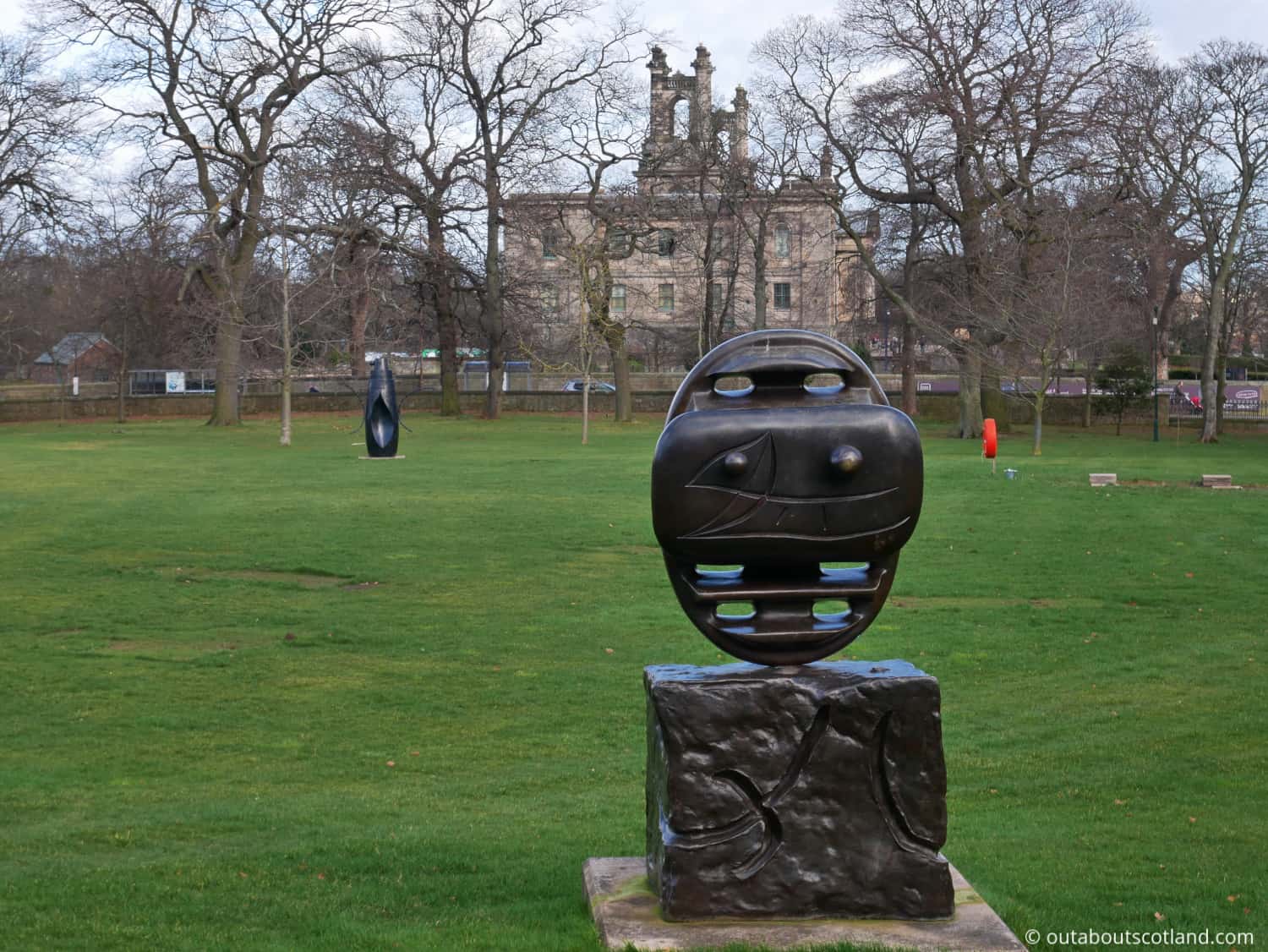
| Address: | 75 Belford Road, Edinburgh, EH4 3DR |
| Opening Hours: | Open daily, 10am-5pm |
| Admission Price: | Admission free. Charges for some exhibitions. |
| Parking: | Parking for visitors is available at both Modern One and Modern Two. A donation is requested of £3 for up to 4 hours and £6 for 4-8 hours. |
| Contact: | enquiries@nationalgalleries.org |
| Facilities: | Wheelchair access, baby changing, disabled parking, lockers, bike rack, toilets, shop, restaurant |
| Photos: | Virtual Tour YouTube Video |
Out About Scotland guide: Scottish National Gallery of Modern Art
The Scottish National Gallery of Modern Art houses a collection of the finest modern and contemporary artworks from Scotland and around the world. Situated near the picturesque Dean Village and the Water of Leith, the gallery is spread across two beautiful neoclassical buildings, Modern One and Modern Two, and is surrounded by landscaped sculpture parks.
One of the most striking features of the Modern One is The Landform, a unique outdoor installation by renowned artist Charles Jencks. This remarkable design serves as both a piece of art and a functional landscape, comprising a rising arc of grass-covered land set against a backdrop of shallow pools of water.
Inside the main building, visitors can explore a diverse collection of works that include masterpieces by famous artists such as Picasso, Matisse, Warhol, and Hockney, as well as collections by more recent artists like Tracey Emin.
In addition to its permanent collection, the gallery hosts a dynamic programmeme of temporary exhibitions as well as educational workshops that allow visitors to delve deeper into the world of modern art, while the on-site cafe and shop offera chance to relax and take home a memento or two.
Cramond Island
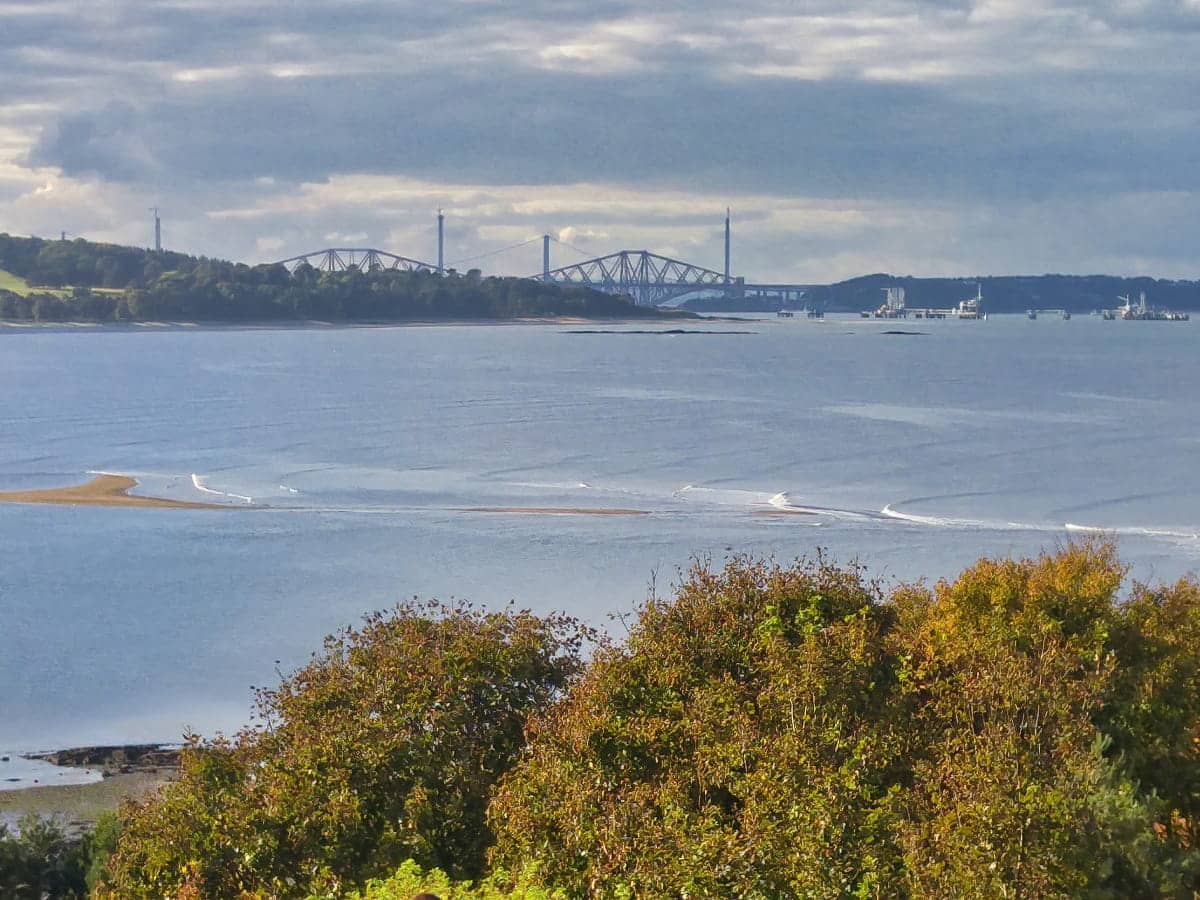
| Address: | Cramond, Edinburgh, EH4 6HY |
| Opening Hours: | Open 24/7 Access depends on tide times |
| Admission Price: | Free |
| Parking: | Free parking is available at Cramond car park (postcode EH4 6NU) |
| Contact: | N/A |
| Facilities: | No facilities on Cramond Island Toilets and cafe in Cramond village |
Out About Scotland guide: Cramond Island
Cramond Island, a picturesque tidal islet, is situated in the Firth of Forth near the village of Cramond on the northwest edge of the city’s boundary.
Steeped in history, the island served as a strategic military stronghold during World War II but it has a much older past that dates back to the prehistoric tribes that lived along the Firth of Forth. Remnants of the island’s past include traces of Roman occupation which can still be spotted scattered across the island, as well as the last sheep farmstead that was occupied until 1904.
Cramond Island is only accessible on foot during low tide via a causeway (actually a WWII anti-tank barricade) that runs across sandflats to the nearby village. Due to the shallowness of this particular part of the estuary, the tide comes in rather fast, which often catches out unwary tourists, leading to unnecessary call-outs to the coastguard.
Once on the island, visitors will find an array of flora, fauna, and birdlife, as well as a couple of secluded shingle beaches and grassy areas that are ideal for picnics. Be aware though, that there are no bins on the island so rubbish must be taken home to protect the island’s fragile ecosystem.
For those seeking a more leisurely experience, Cramond Island offers attractive (though short) walking trails with lovely views of the surrounding shoreline and the Forth Bridges.
Blackford Hill
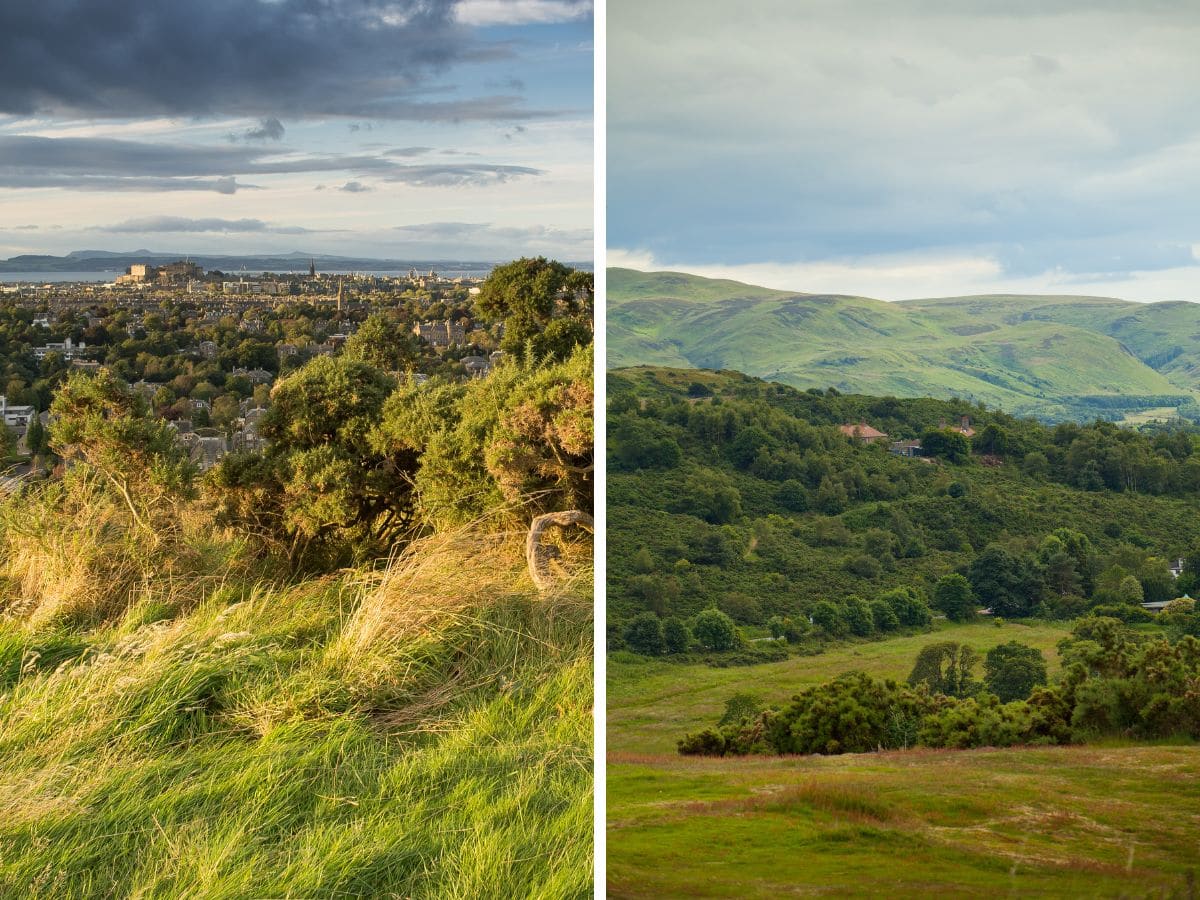
Blackford Hill is located 1.7 miles to the south of Princes Street, where it rises 538 feet (164 metres) above the city and provides a stunning vantage point for panoramic views, encompassing Edinburgh Castle and the Firth of Forth to the north and the Pentland Hills to the south.
The area’s history dates back to the Iron Age and there’s archaeological evidence of a hillfort at the very top which is now protected as a Scheduled Ancient Monument. In more recent times, the hill became the home of the Royal Observatory which moved from its original location on Calton Hill in 1896.
The summit is also the location of a police radio transmitter and a meteorological station, while 30 acres of woodland lie on the north and west faces.
Visitors to Blackford Hill can revel in the beauty of the hill as well as the Hermitage of Braid, a picturesque 18th-century local nature reserve that features a walled garden, an 1875 manor house (closed to the public), a wildflower meadow, and woodland walking trails.
How to Visit Edinburgh’s Landmarks

For such a small city, Edinburgh’s public transport systems are surprisingly good – to the point where many residents don’t even bother with owning a car at all. That might seem like a strange concept to some people, but having lived just a mile from Waverley train station, I can confirm it’s totally possible to rely entirely on Edinburgh’s buses, trams, trains, and taxi services.
Lothian buses, in particular, are excellent, with regular ultra-efficient vehicles that routinely swing past the stops on Princes Street with impressive regularity. The network stretches to every single corner of the city and beyond, and you can get an all-day ticket to explore the top attractions for just a few pounds.
The best way to buy tickets is to either get them on the bus (you can use contactless payments) or buy a book of tickets from one of the Lothian Bus travel shops (there’s one at the corner of Waverley Bridge near the train station).
Taxis are another travel option, and you’ll find them all over the city, but whenever I’ve been out on a night out, I always head to Market Street (again, near the train station), as there’s usually a queue of taxis waiting for a job.
While there are many minicabs in Edinburgh, you might feel safer taking a black cab because their drivers must pass a police check, and there is almost no chance that dishonest drivers will add a few pounds to the fare because they have a tourist in the back.
Two firms I recommend are Central Taxis and CityCabs, both of which have very good online booking apps. But with all that in mind, if the weather’s nice, then why not just walk between its landmarks?
Edinburgh is a compact city and it’s so easy to use the power of your own feet to transport yourself to all the major attractions. Plus, there’s an added bonus in that not only will you help to free up the congested streets, but you’ll also get to see all the hidden mediaeval alleyways that you’d miss if you were on public transport.
Frequently Asked Questions
What is Edinburgh’s famous landmark?
Edinburgh’s most famous landmark is Edinburgh Castle. The historic fortress sits at the top of Castle Rock, a volcanic plug that offers stunning views of the city. With a history dating back over 1,000 years, the castle played a crucial role in Scotland’s history and served as a royal residence, a military garrison, and a prison.
What is Edinburgh City famous for?
Edinburgh is famous for its history, architecture, and vibrant culture. Some of the highlights that make Edinburgh famous include:
1: Edinburgh Castle – Located on Castle Rock in the city centre, this historic fortress has been a symbol of the city for centuries. It houses the Scottish Crown Jewels and the National War Memorial.
2: The Royal Mile – This historic street connects Edinburgh Castle at the top to the Palace of Holyroodhouse at the bottom. The Royal Mile is lined with several attractions including St. Giles’ Cathedral and the Camera Obscura.
3: Festivals – Edinburgh is known as one of the world’s best festival cities, hosting internationally renowned events such as the Edinburgh International Festival, the Edinburgh Fringe Festival, and the Royal Edinburgh Military Tattoo.
What is Edinburgh’s famous street?
Edinburgh’s most famous street is the Royal Mile. It’s the main thoroughfare in the city’s Old Town, connecting two major landmarks: Edinburgh Castle and the Palace of Holyroodhouse.
The Royal Mile is approximately one Scots mile long (which is slightly longer than a standard mile) and is lined with a mix of historic buildings, shops, restaurants, and pubs.
Was Harry Potter filmed in Edinburgh?
While Edinburgh served as an inspiration for some of the magical elements in the Harry Potter series, the movies themselves were not filmed in the city. However, some locations, like the Elephant House cafe and Greyfriars Kirk, are associated with author J.K. Rowling and are popular among Potter fans.
The Harry Potter movies were mainly filmed in London, Oxford, and Gloucester. Additionally, some of the outdoor scenes were filmed in the Scottish Highlands.







